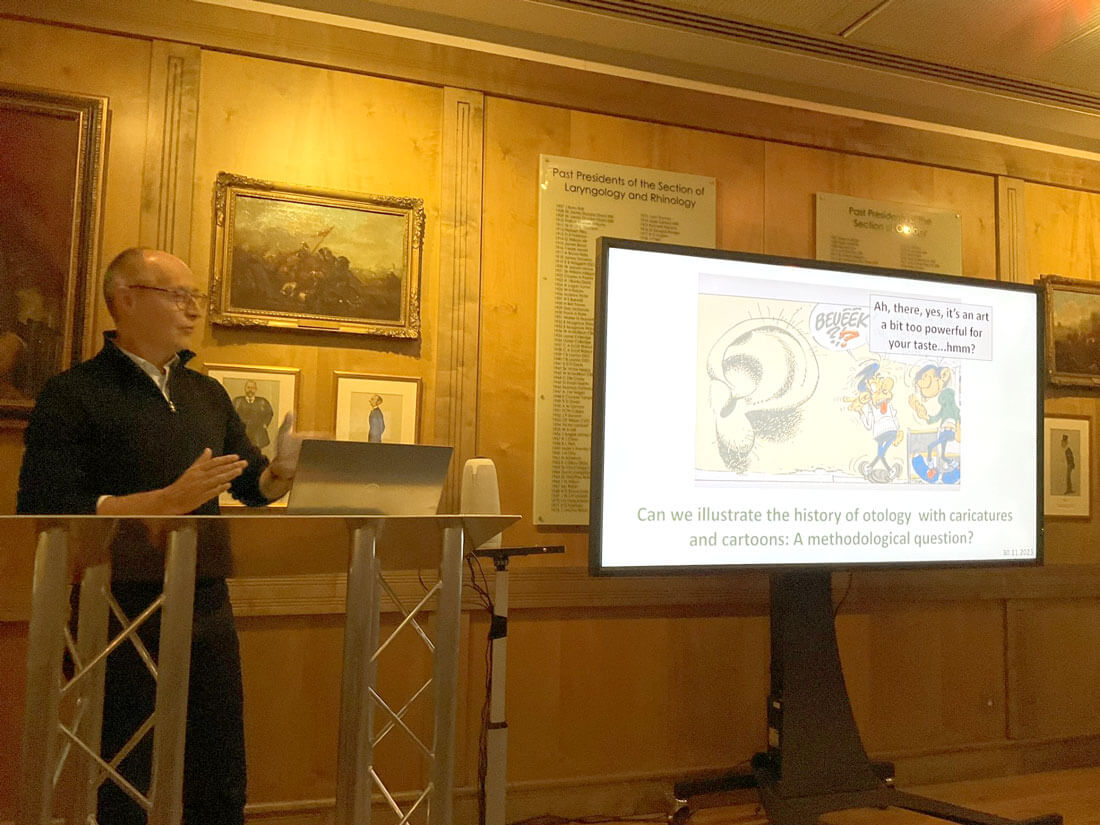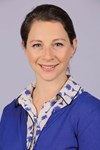
 Katherine Conroy, MA (Cantab) MB BChir FRCS (ORL-HNS), Wythenshawe Hospital, Manchester, UK.
Katherine Conroy, MA (Cantab) MB BChir FRCS (ORL-HNS), Wythenshawe Hospital, Manchester, UK.
The annual meeting of the British Society for the History of ENT was held at the Royal Society of Medicine’s historic Toynbee Mackenzie room. Dozens of attendees, from foundation trainees to retired professors, came together for an afternoon of talks as enthralling and diverse as ever.
The trainee papers covered a vast range of topics, from ancient medical practices to late-20th century developments, and from anatomy and technology to culture and war. Most interesting historical fact of the day came from Mohit Achanta: in his quest for tinnitus treatments, Toynbee died from misadventure with chloroform and hydrocyanic acid.
As always, the standard of presentations was very high. Mitanshi Luhana’s history of laser technology being fast-tracked from defence and communication to medical applications was fascinating, as was Henriette Wa Katolo’s account of Theodore C Lister, the visionary otolaryngologist whose recognition of aviation’s unique physiological challenges paved the way for the US Air Force medical service.
Histories of Lempert and Barany, by Sarah McBrinn and Tony Feng respectively, raised interesting questions on intellectual accreditation in ENT and beyond.
However, it was Vikash Dodhia who took the coveted JLO prize, looking at the delicate balance between mortality and speech in the history of laryngectomy; whilst a patient taking an ice pick and goose feather to their trachea sounds an extreme method to achieve vocalisation without aspiration, it is well recognised that disability innovation is a strong driver for adaptive technology. He was followed closely in the scoring by runner-up Ying Ki Lee, who artfully wove linguistics and mythology with physiology to depict the treatment of goitre (or ‘Lump of Wisdom’) in ancient Chinese medicine.
The meeting was ended by Professor Albert Mudry, visiting from Switzerland, with the question of whether we can illustrate the history of ENT with caricatures and cartoons? The answer was not really – but satire and ridicule are still valuable, critical resources to study history, and a good way to amuse an audience.
The next meeting will be held on 5 December 2024, and those wishing to submit abstracts are encouraged to read the guide on the BSHENT website.



